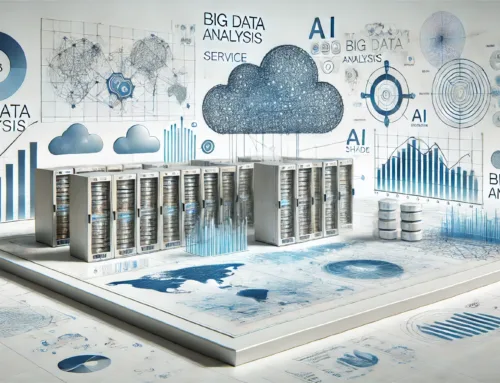You’re exploring the realm of predictive analysis services, keen on discovering the seven top solutions that could revolutionize your decision-making processes. These services offer a glimpse into the future, utilizing cutting-edge techniques like data mining, neural networks, and regression analysis to provide accurate insights. Stay tuned to uncover how these tools can transform the way you interpret data and make strategic decisions moving forward.
Forecasting
Curious about how predictive analysis can enhance your forecasting capabilities? By leveraging predictive analytics, you can gain valuable insights into various aspects, such as weather prediction and market trends. When it comes to weather prediction, predictive analysis can help you anticipate extreme weather conditions, enabling better preparation and risk management. Understanding market trends is crucial for making informed business decisions, and predictive analysis can provide you with data-driven forecasts to stay ahead of the competition.
Weather prediction plays a significant role in industries like agriculture, transportation, and tourism. By utilizing predictive analysis tools, you can access historical weather data, satellite imagery, and advanced algorithms to forecast upcoming weather patterns accurately. This information allows you to plan operations effectively, reduce weather-related risks, and optimize resource allocation.
Similarly, in the realm of market trends, predictive analysis can help you identify patterns, predict customer behavior, and anticipate shifts in demand. By analyzing historical sales data, consumer preferences, and external factors, you can make proactive decisions to capitalize on emerging opportunities and mitigate potential risks. Embracing predictive analysis in forecasting empowers you to make strategic decisions based on data-driven insights, ultimately driving business growth and success.
Data Mining
To delve into the realm of data mining is to uncover hidden patterns, relationships, and valuable insights within vast datasets. This process involves utilizing advanced techniques such as machine learning for predictive modeling and pattern recognition. Data preprocessing plays a crucial role in refining the data before mining, ensuring accurate and meaningful results. Here are three key aspects to consider when delving into the world of data mining:
- Data Visualization: Visualizing the data through graphs, charts, and dashboards can provide a clearer understanding of the patterns and trends within the dataset, making it easier to interpret and derive insights.
- Machine Learning: Leveraging machine learning algorithms in data mining can help automate the process of identifying patterns and making predictions based on historical data, enabling more accurate decision-making.
- Pattern Recognition: By utilizing pattern recognition techniques, data miners can identify recurring patterns within the dataset, leading to the discovery of valuable insights that may have been otherwise overlooked.
Text Analytics
Text analytics, also known as text mining, is a powerful method used to extract valuable insights and patterns from unstructured textual data. It involves various techniques such as sentiment analysis, which helps in determining the emotional tone behind a piece of text. Sentiment classification, a subfield of sentiment analysis, categorizes text into different sentiment classes like positive, negative, or neutral.
In addition to sentiment analysis, text analytics includes text clustering, which groups similar documents together based on their content. This clustering technique aids in organizing large amounts of text data efficiently. Another important aspect is text summarization, which condenses lengthy text into shorter versions while retaining the key information.
Statistical Analysis
Statistical analysis is a foundational component of predictive analytics services, playing a crucial role in uncovering patterns and relationships within data. This analytical tool utilizes data visualization techniques to present complex information in a visually appealing manner, making it easier for you to identify trends and outliers. Correlation analysis methods further enhance the understanding of how variables interact with each other, helping you predict future outcomes more accurately. Here are three key reasons why statistical analysis is indispensable in predictive analytics:
- Insightful Patterns: Statistical analysis uncovers hidden patterns within data that may not be apparent at first glance, providing you with valuable insights for making informed decisions.
- Data-driven Decision Making: By utilizing correlation analysis methods, you can establish relationships between variables, enabling you to make data-driven decisions with confidence.
- Predictive Accuracy: Statistical analysis enhances the accuracy of predictive models by identifying significant correlations and trends, leading to more precise forecasts and strategic planning.
Neural Networks
Neural networks are at the core of modern predictive analysis services. Understanding the basics of neural networks is crucial for grasping their applications in predictive modeling. This subtopic will delve into the fundamental principles of neural networks and how they can be effectively utilized in predictive analysis scenarios.
Neural Network Basics
Understanding the basics of neural networks is crucial in the field of predictive analysis. Neural networks, a key component of deep learning, are a type of machine learning algorithm inspired by the human brain’s structure and function.
When delving into neural network basics, consider the following:
- Fundamental Structure: Neural networks consist of layers of interconnected nodes that process information. Understanding the architecture, including input, hidden, and output layers, is essential for effective implementation.
- Activation Functions: These functions introduce non-linearities into the neural network, enabling it to learn complex patterns. Exploring activation functions like ReLU and Sigmoid can enhance your understanding of how neural networks work.
- Backpropagation: This process allows neural networks to learn from errors by adjusting the weights of connections. Mastering backpropagation is crucial for optimizing neural network performance.
Applications in Predictive Analysis
To effectively leverage neural networks in predictive analysis, it is crucial to recognize their diverse applications across various industries. Neural networks play a vital role in predictive modeling strategies, offering advanced capabilities to analyze complex data patterns and make accurate predictions. These sophisticated algorithms are used in fields such as finance, healthcare, marketing, and more to forecast trends, customer behavior, and market dynamics.
One key advantage of neural networks is their real-time prediction capabilities, enabling businesses to react swiftly to changing conditions and optimize decision-making processes. In finance, neural networks are employed to predict stock prices, detect fraud, and manage risks effectively. In healthcare, they help in diagnosing diseases, personalizing treatments, and improving patient outcomes. Additionally, in marketing, neural networks assist in segmenting customers, predicting buying patterns, and enhancing targeted advertising campaigns.
Decision Tree
When it comes to Decision Trees, understanding the basics is crucial for effective predictive analysis. You’ll explore various applications where Decision Trees excel in making complex decisions based on data. Additionally, uncovering the benefits of utilizing Decision Trees can provide valuable insights into improving decision-making processes.
Decision Tree Basics
An essential tool in predictive analysis services, the Decision Tree algorithm is a powerful method for creating a visual representation of possible outcomes based on input data. Decision tree algorithms segment data into subsets based on certain parameters, leading to a tree-like structure where each branch represents a possible decision path. Decision tree visualization enables users to easily interpret complex relationships within the data and understand the decision-making process.
Markdown list:
- Intuitive Understanding: Decision trees provide a straightforward approach to analyzing data, making it easier for individuals to grasp the logic behind the predictions.
- Transparency: The transparency of decision tree models allows for clear visibility into how predictions are made, which enhances trust in the results.
- Interpretability: Decision trees offer a simple yet powerful way to interpret and communicate the underlying patterns within the data, aiding in decision-making processes.
Decision Tree Applications
With a solid understanding of Decision Tree Basics in predictive analysis services, it is now valuable to explore the practical applications of decision trees in various fields. Decision tree algorithms play a crucial role in classifying data by creating a tree-like model of decisions. These models are widely used in industries such as finance, healthcare, marketing, and more. Decision tree visualization aids in understanding complex data patterns and insights by presenting them in a clear and intuitive graphical format. In finance, decision trees are utilized for credit scoring and risk assessment, helping institutions make informed lending decisions. Healthcare professionals employ decision tree algorithms to diagnose diseases and recommend appropriate treatments based on patient data. In marketing, decision trees assist in customer segmentation, predicting purchasing behavior, and optimizing marketing strategies. The versatility and interpretability of decision trees make them a powerful tool for decision-making across various domains.
Decision Tree Benefits
Exploring the realm of Decision Tree Benefits reveals a multitude of advantages that this analytical tool offers in the realm of predictive analysis services. Decision tree classification allows for the creation of a visual model that is easy to interpret, making it accessible to users across various expertise levels. The simplicity and transparency of decision tree algorithms enable users to understand the reasoning behind predictions, fostering trust in the accuracy of the results. Additionally, decision trees can handle both numerical and categorical data, providing flexibility in analyzing different types of information.
When utilizing decision trees in predictive analysis services, you can benefit from:
- Interpretability: Easily comprehend how decisions are made, enhancing transparency and trust in the model.
- Flexibility: Capable of handling diverse data types, allowing for comprehensive analysis.
- Efficiency: Quick processing times due to the straightforward nature of decision tree algorithms, enabling rapid decision-making based on the results.
These advantages make decision trees a valuable tool in predictive analysis, offering a blend of simplicity, reliability, and efficiency.
Regression
When analyzing data in predictive analysis services, the technique of regression plays a crucial role in understanding and predicting relationships between variables. Linear regression, a fundamental concept in machine learning, is commonly used to model the relationship between a dependent variable and one or more independent variables. This method helps in predicting outcomes based on the historical relationship between these variables.
Time series analysis, another aspect of regression, focuses on analyzing data points collected over a period of time to forecast future trends. By examining patterns and behaviors within the data, predictive modeling using regression can provide valuable insights for decision-making processes.
Regression techniques enable you to quantify the impact of different variables on the outcome of interest, making it a powerful tool in predictive analytics. Through regression analysis, you can uncover hidden relationships, make informed predictions, and optimize strategies based on data-driven insights.
Frequently Asked Questions
Can Predictive Analysis Services Guarantee 100% Accuracy?
Predictive analysis services cannot guarantee 100% accuracy due to algorithm biases and ethical implications. Real-time updates and performance monitoring help improve accuracy but complete certainty remains elusive. Stay informed and vigilant when utilizing predictive analysis.
How Do Predictive Analysis Services Handle Data Privacy and Security?
When it comes to data privacy and security, predictive analysis services prioritize safeguarding sensitive information through data encryption and stringent user permissions. By implementing these measures, your data is protected against unauthorized access and potential breaches.
Are There Any Limitations to the Types of Data That Can Be Analyzed?
When considering data compatibility in predictive analysis, it’s crucial to acknowledge ethical considerations. Limitations on the types of data that can be analyzed may arise due to privacy regulations, data quality issues, or ethical concerns.
Can Predictive Analysis Services Be Customized to Specific Industries?
Yes, predictive analysis services can be customized to specific industries by tailoring predictive modeling to suit sector-specific needs. This customization allows for more accurate insights and targeted solutions within different industry applications, enhancing overall effectiveness.
What Is the Process for Integrating Predictive Analysis Services Into Existing Systems?
So, you want to know how to seamlessly integrate predictive analysis services into your existing systems? Overcome integration challenges by mapping out data flows, aligning key stakeholders, and utilizing agile implementation strategies for a successful transition.




